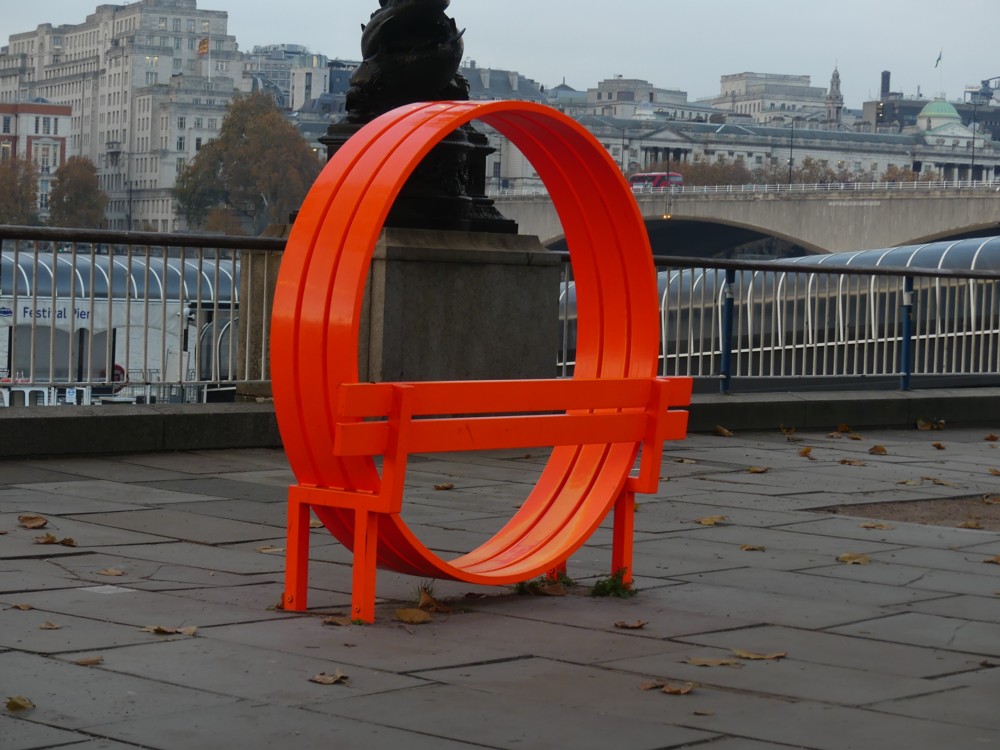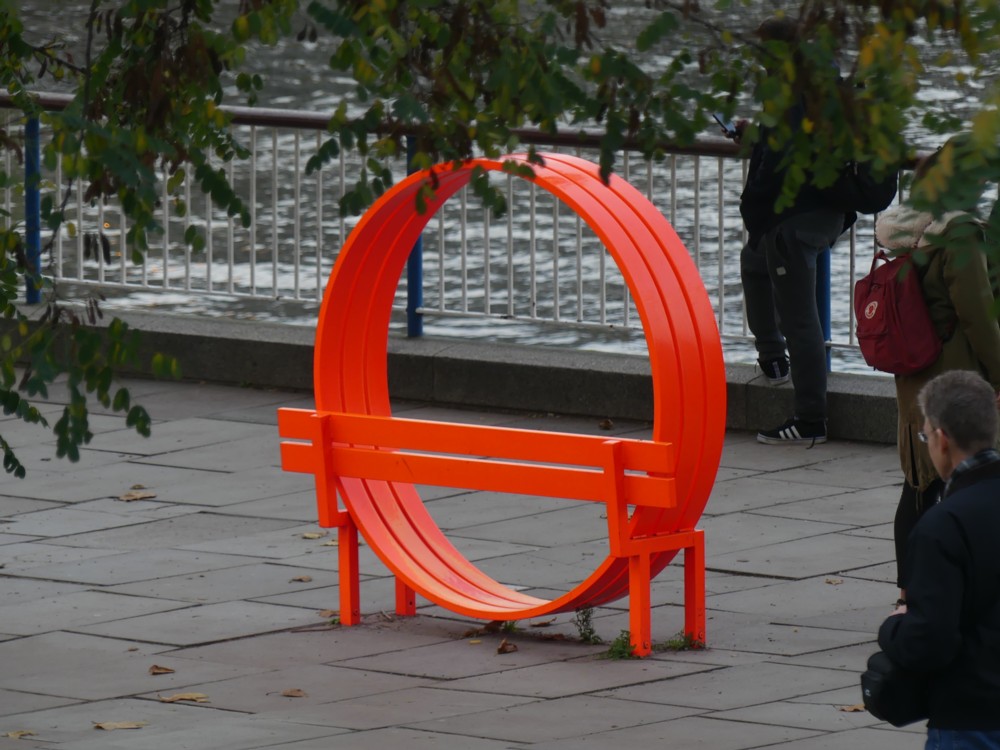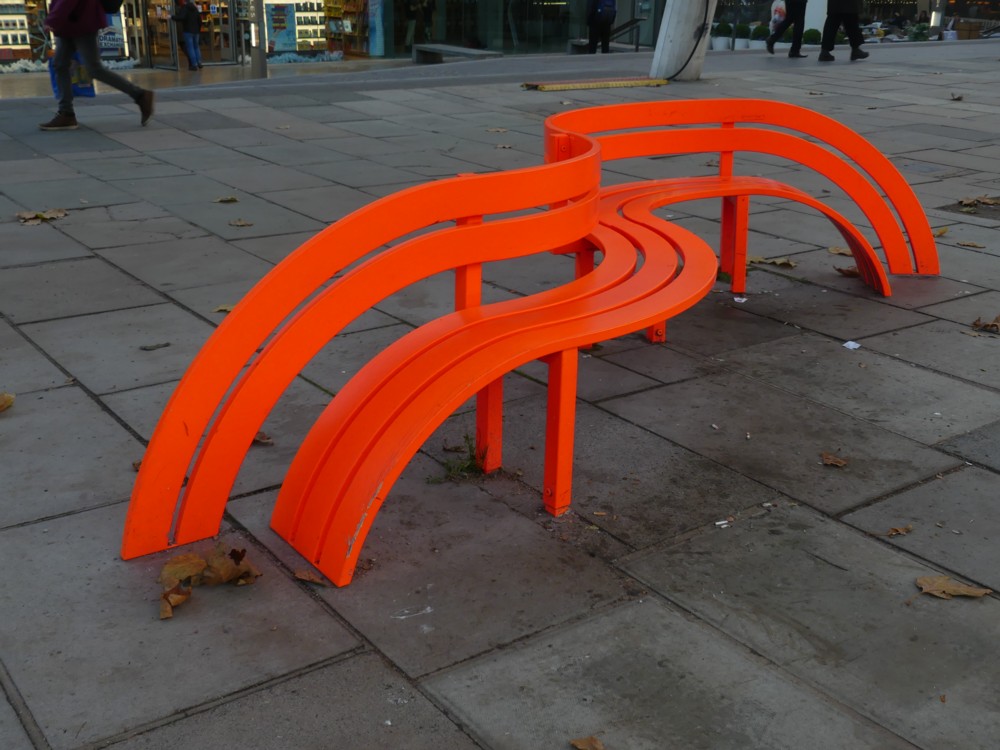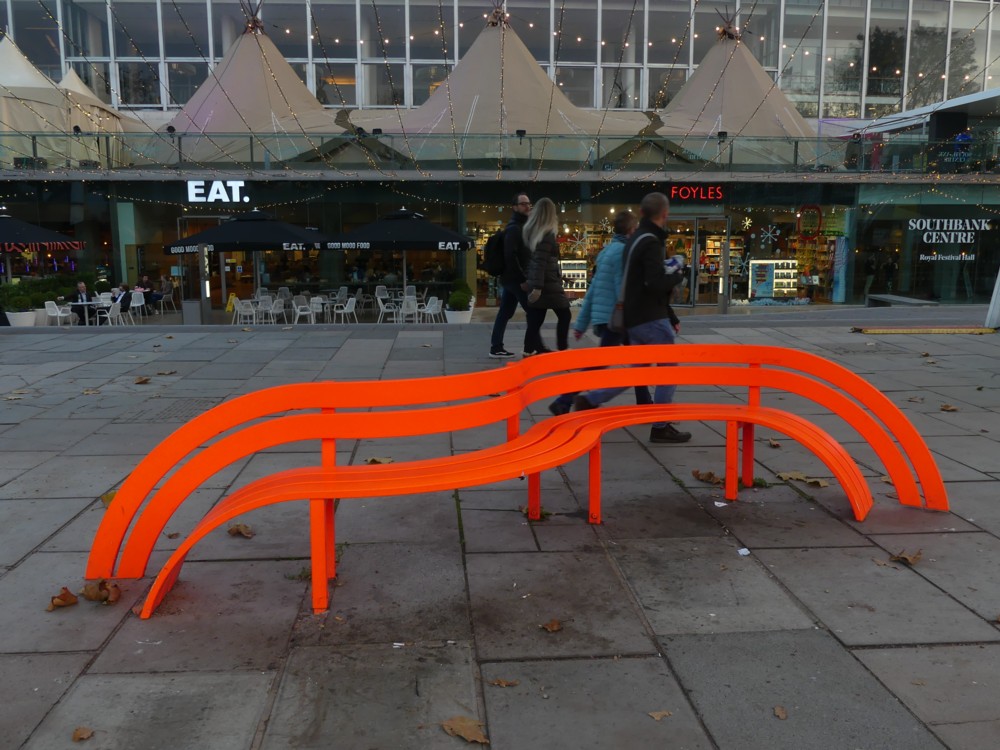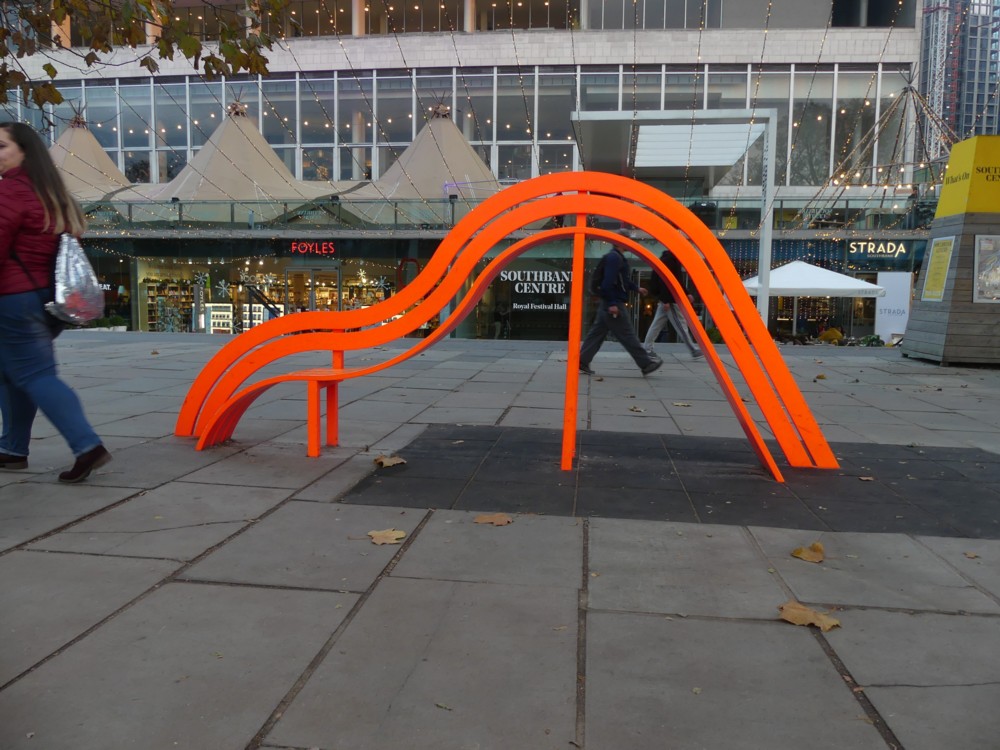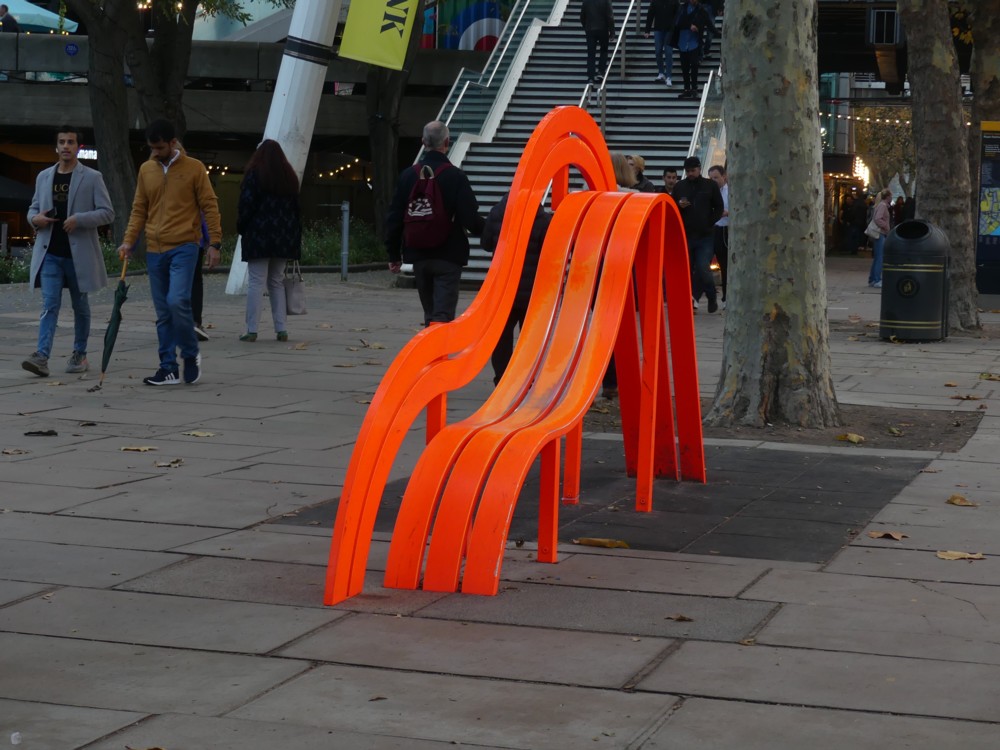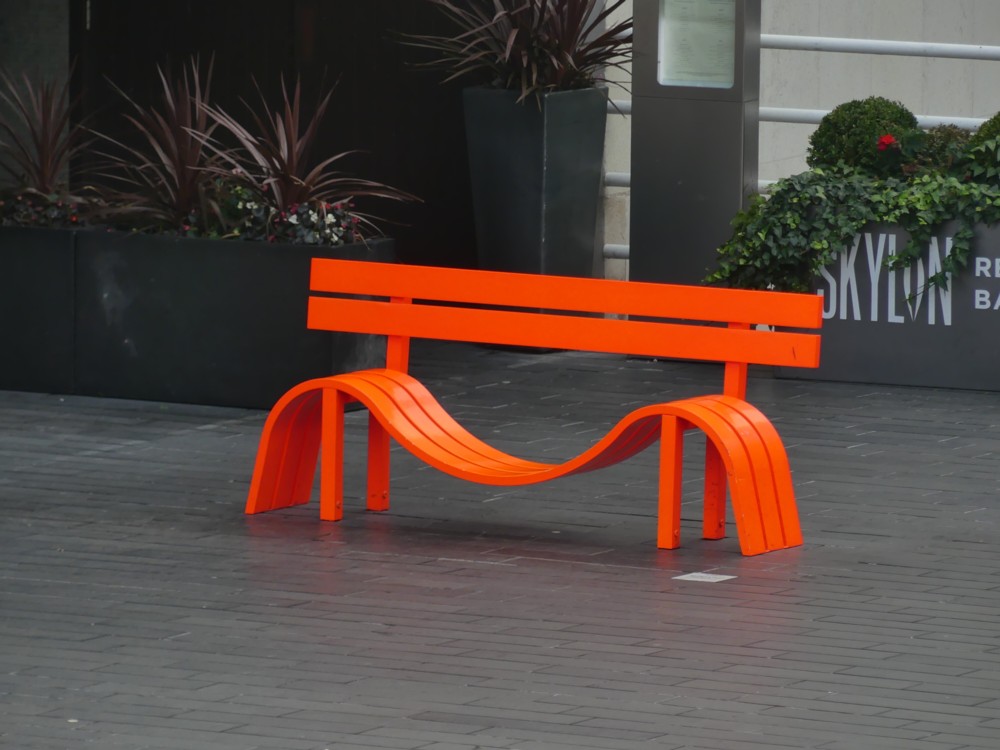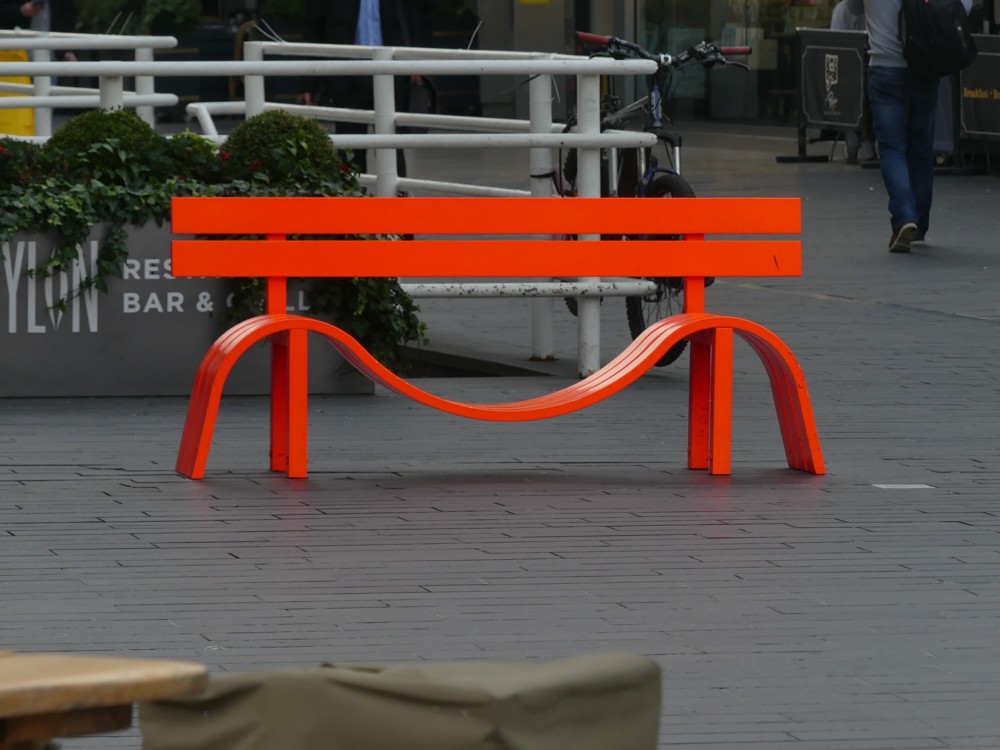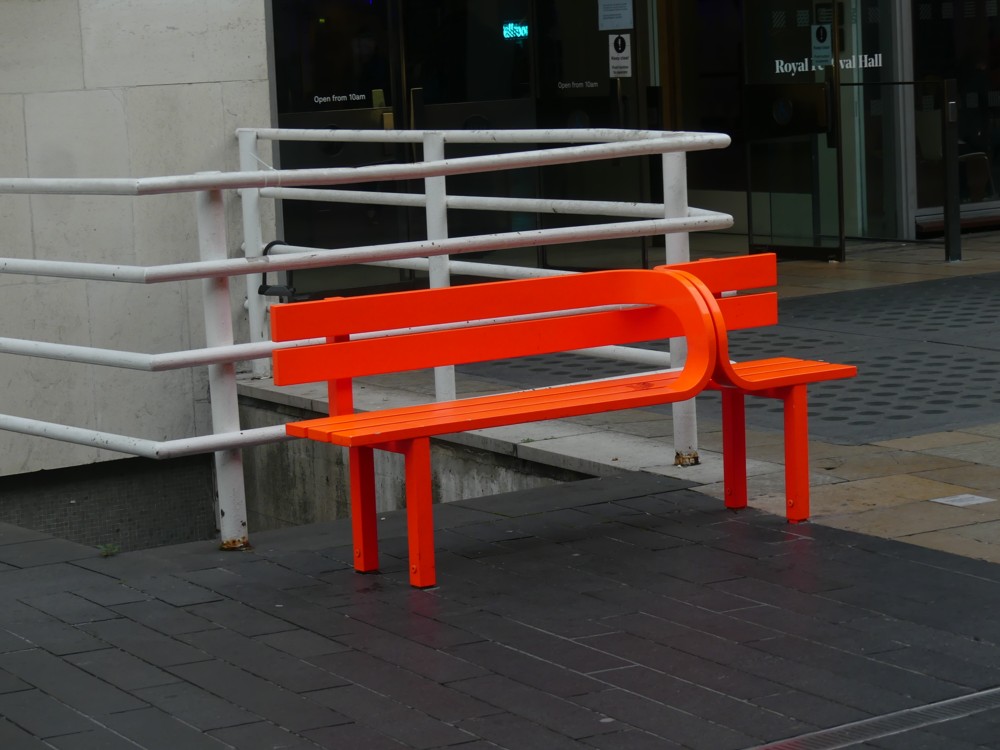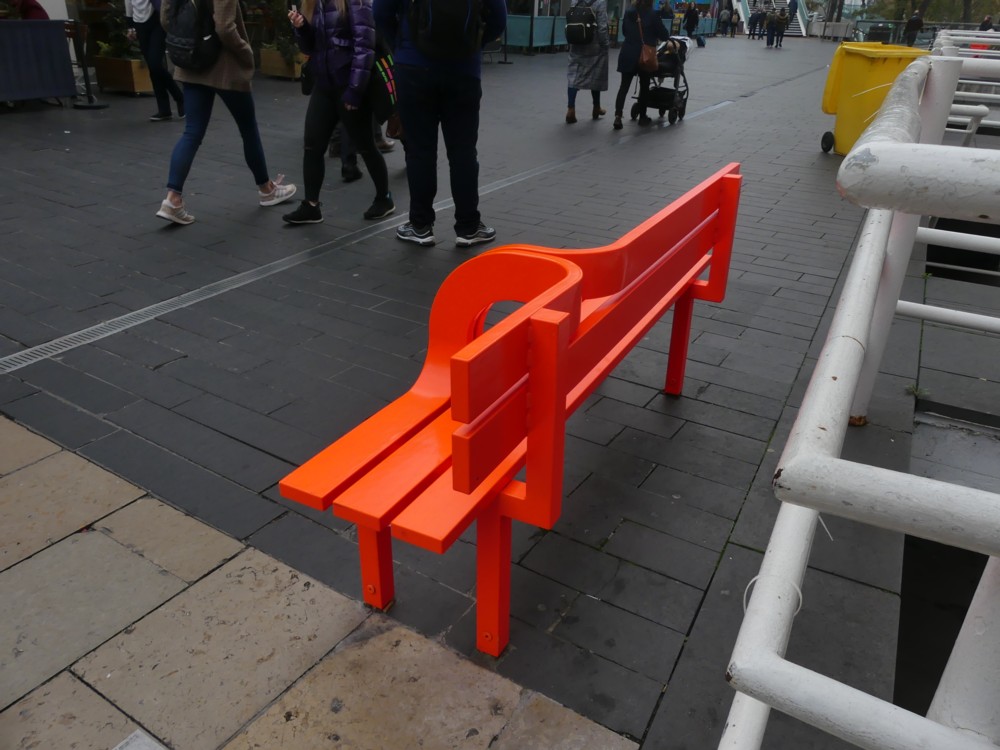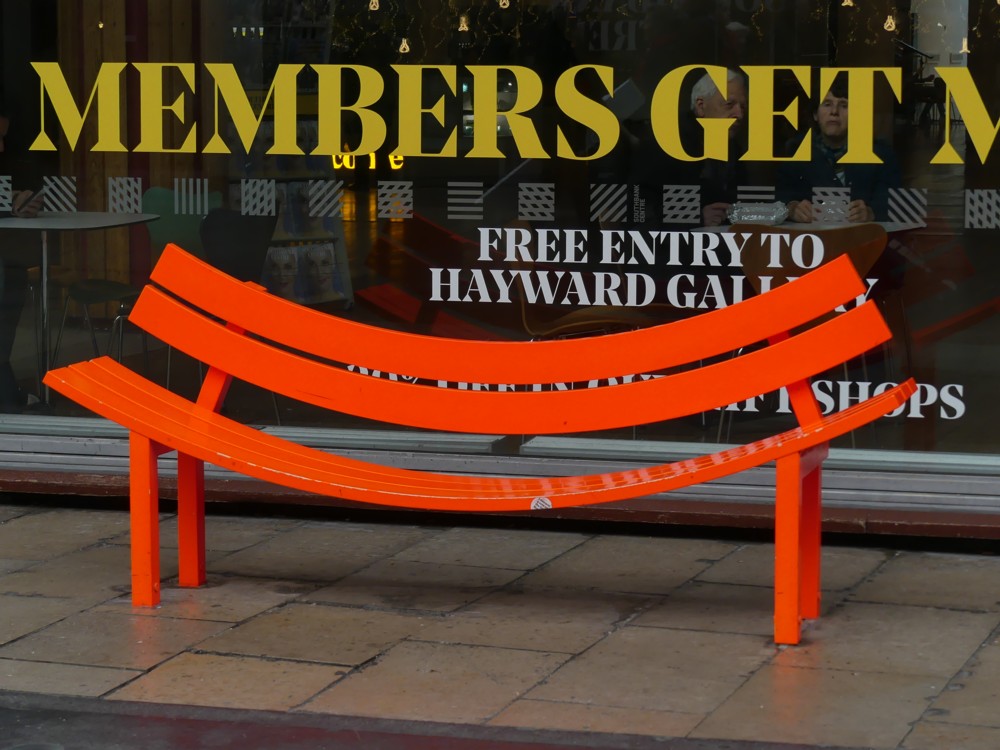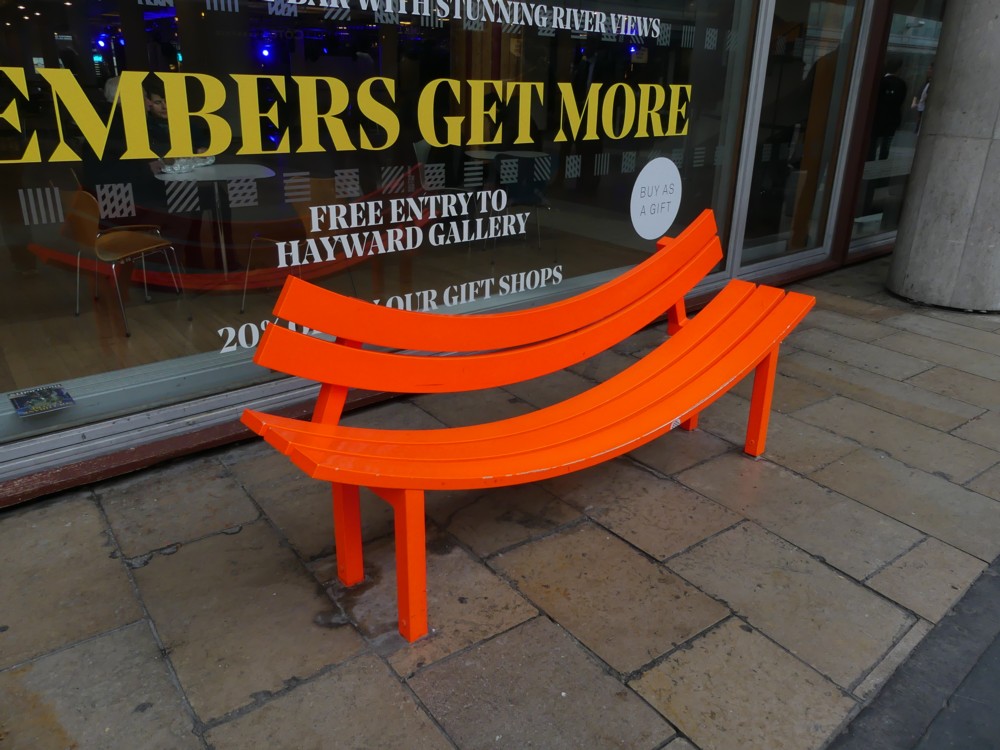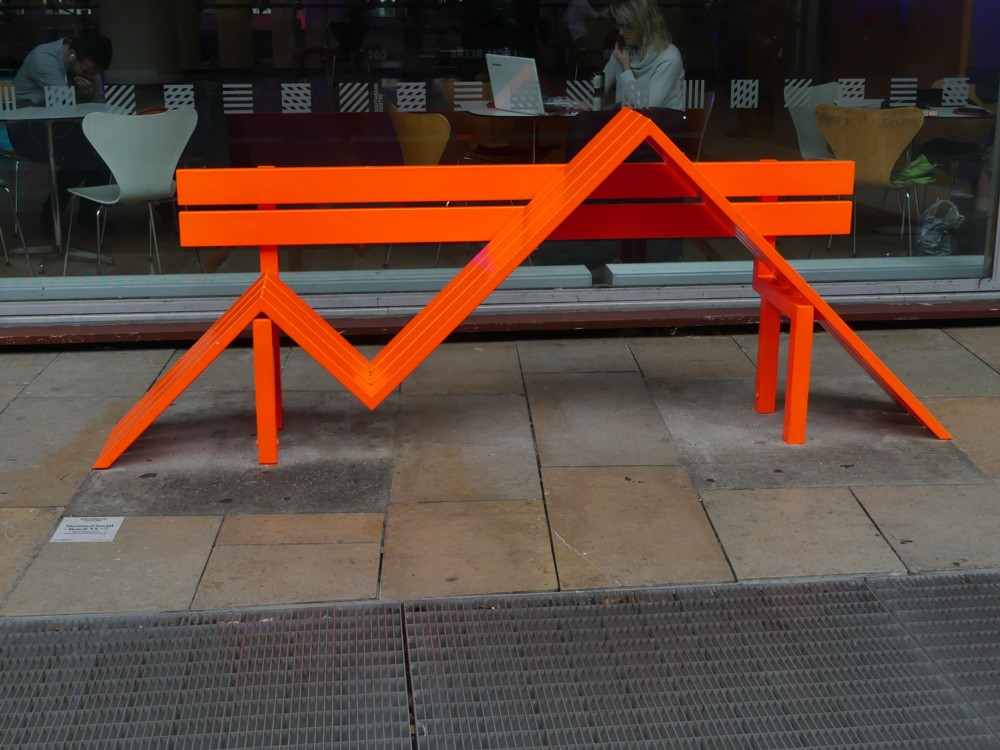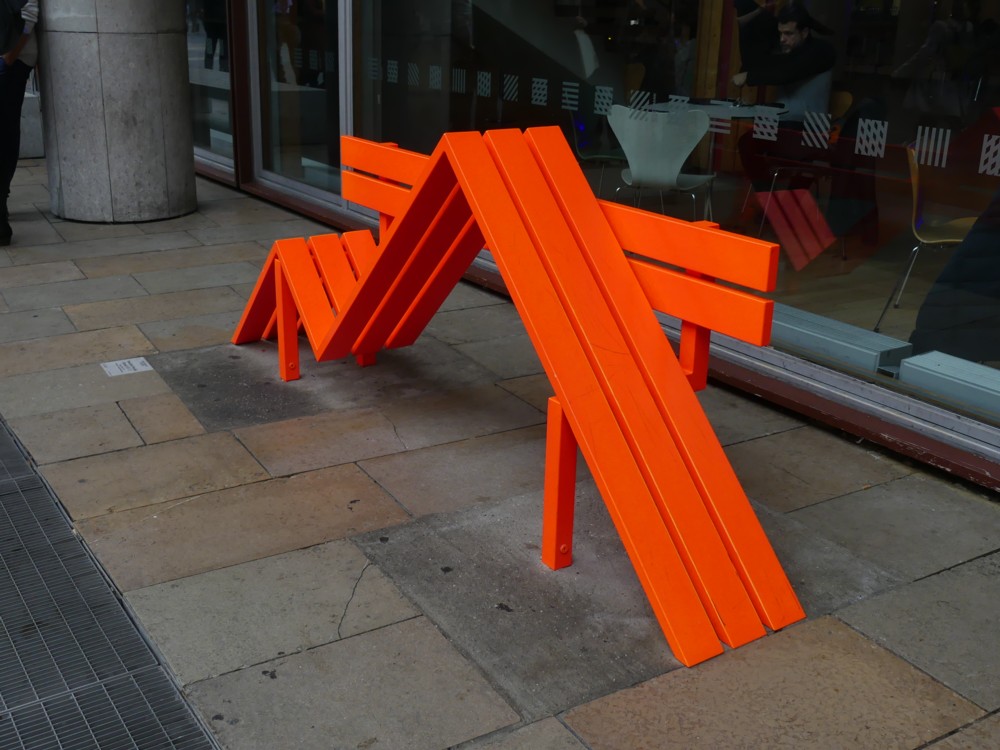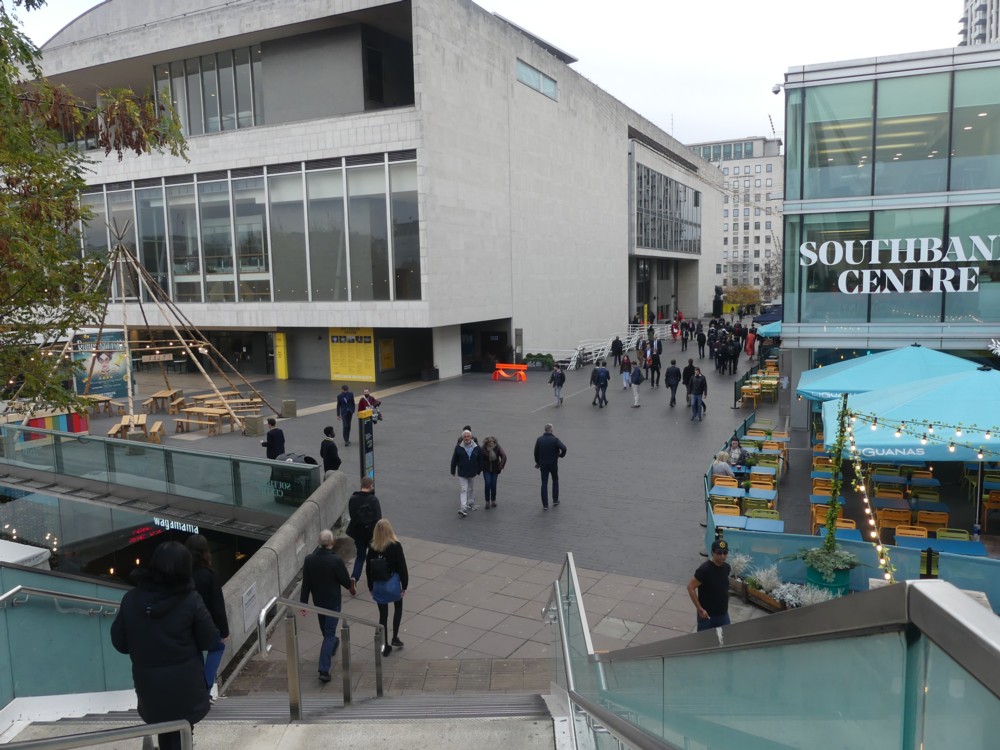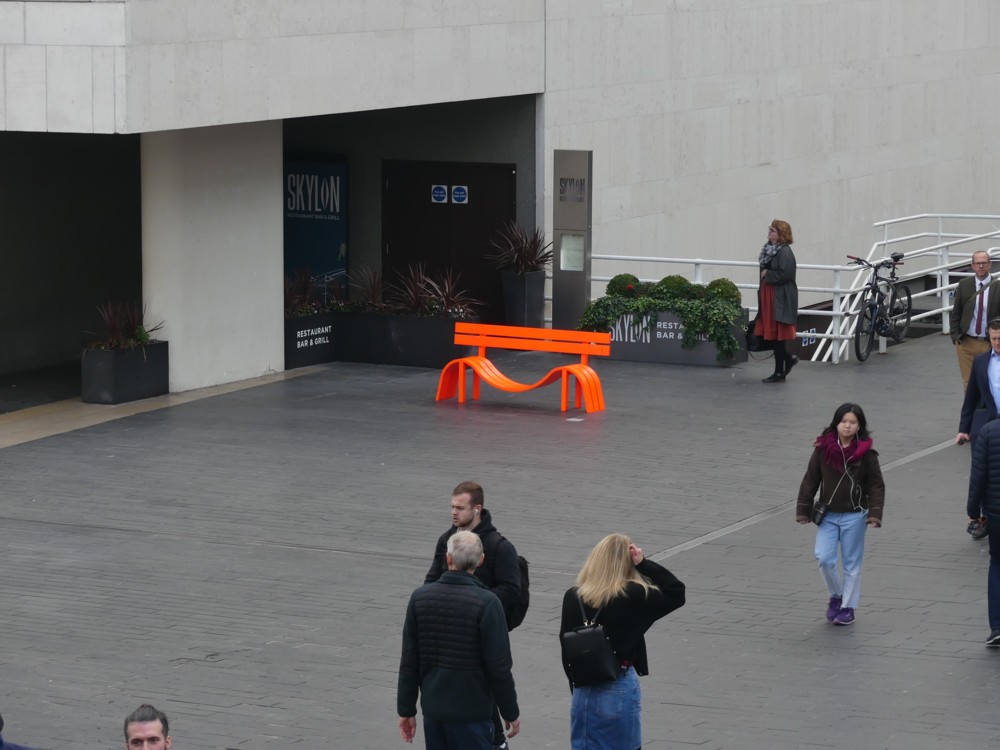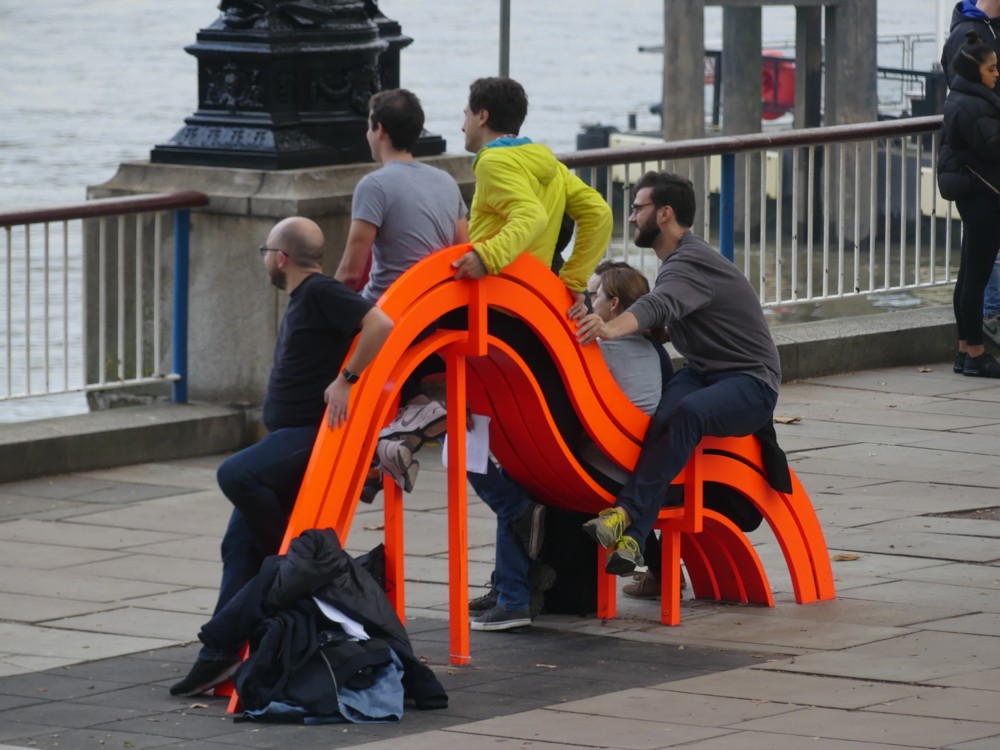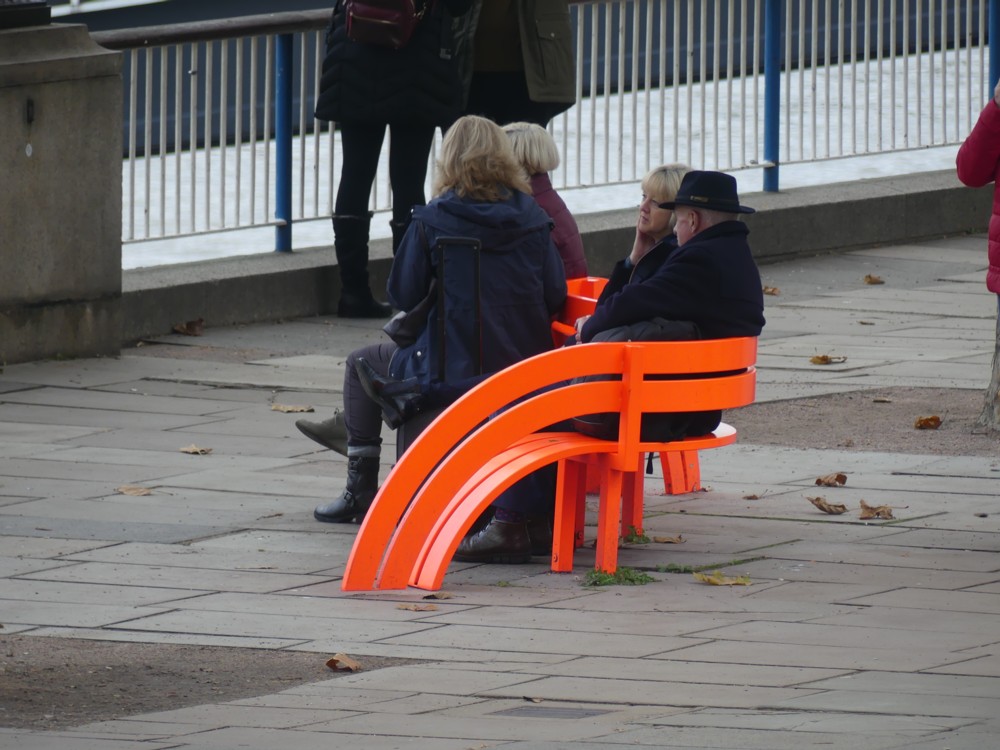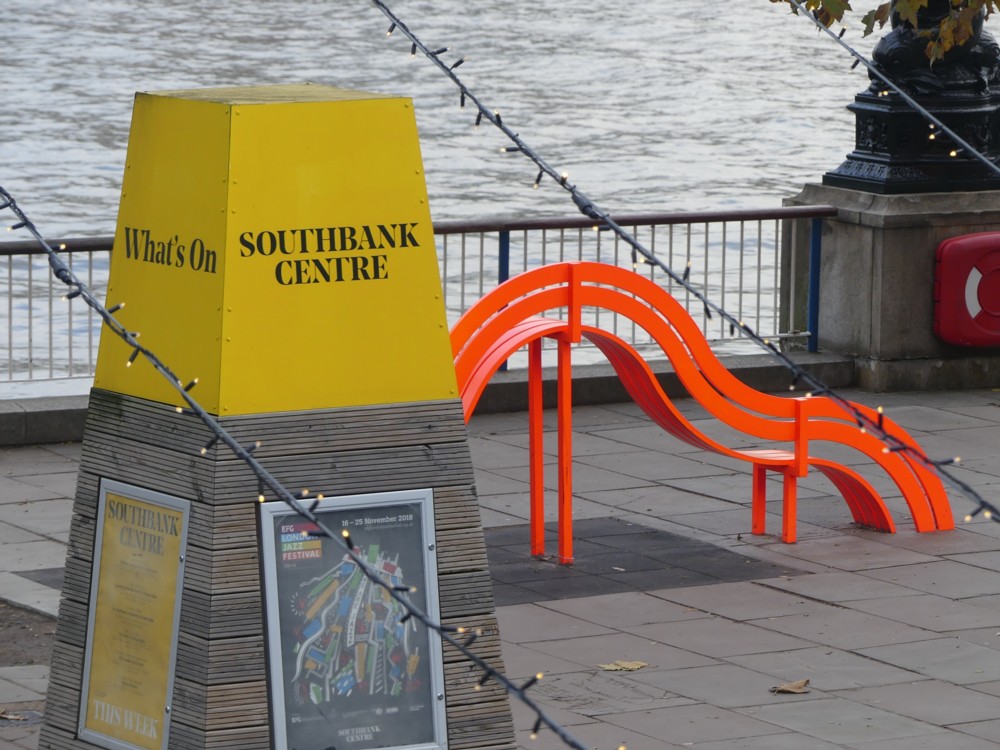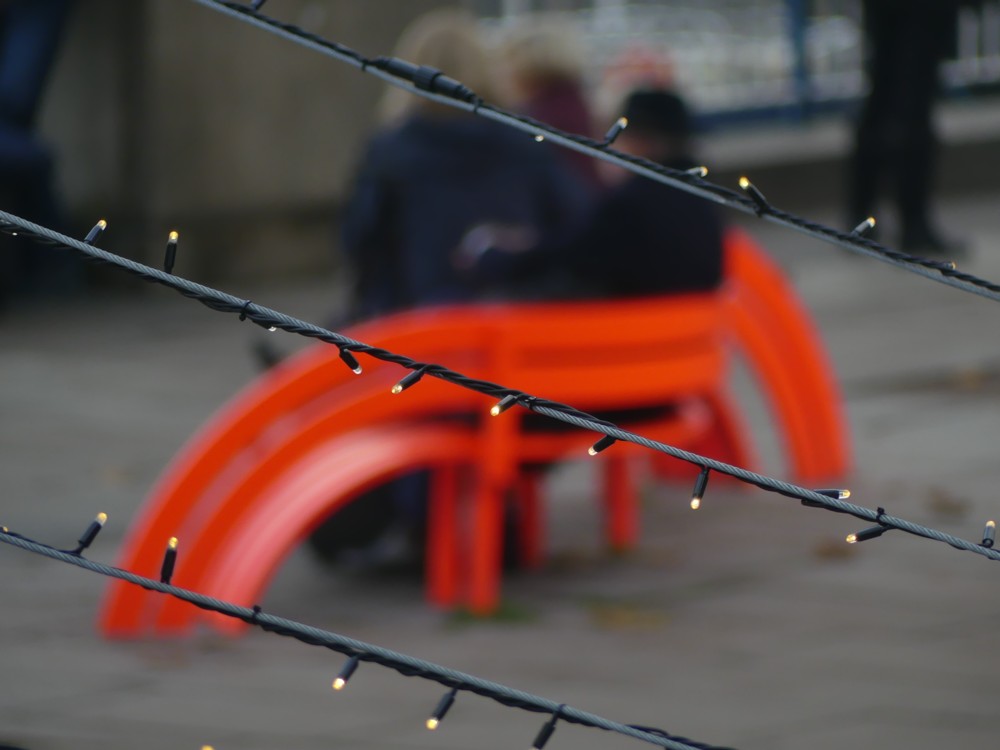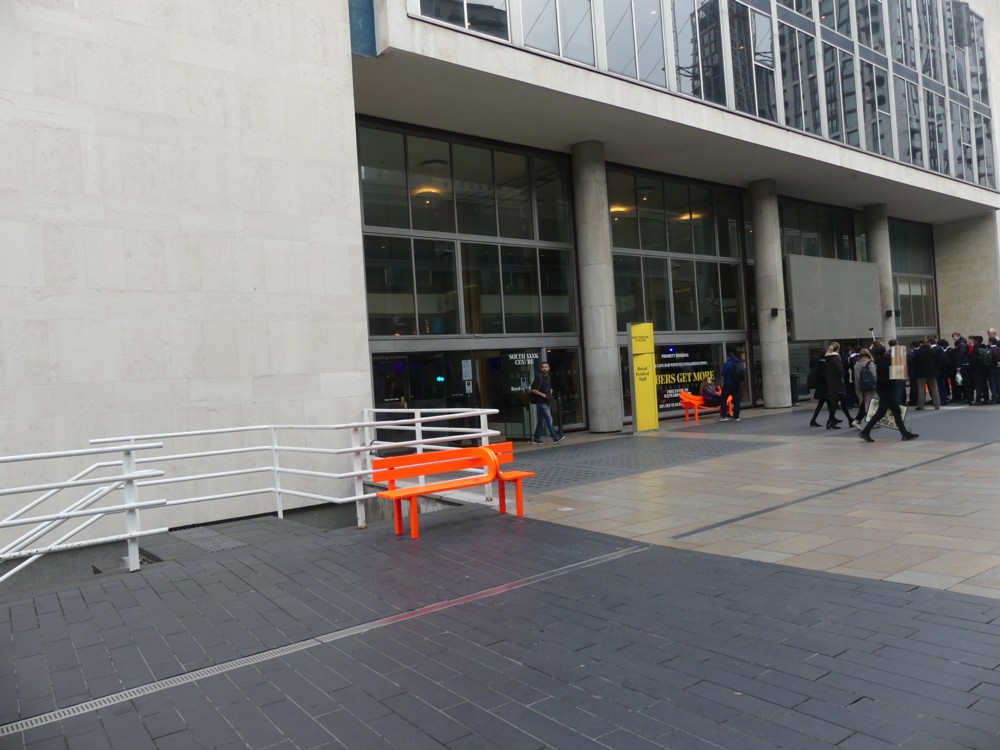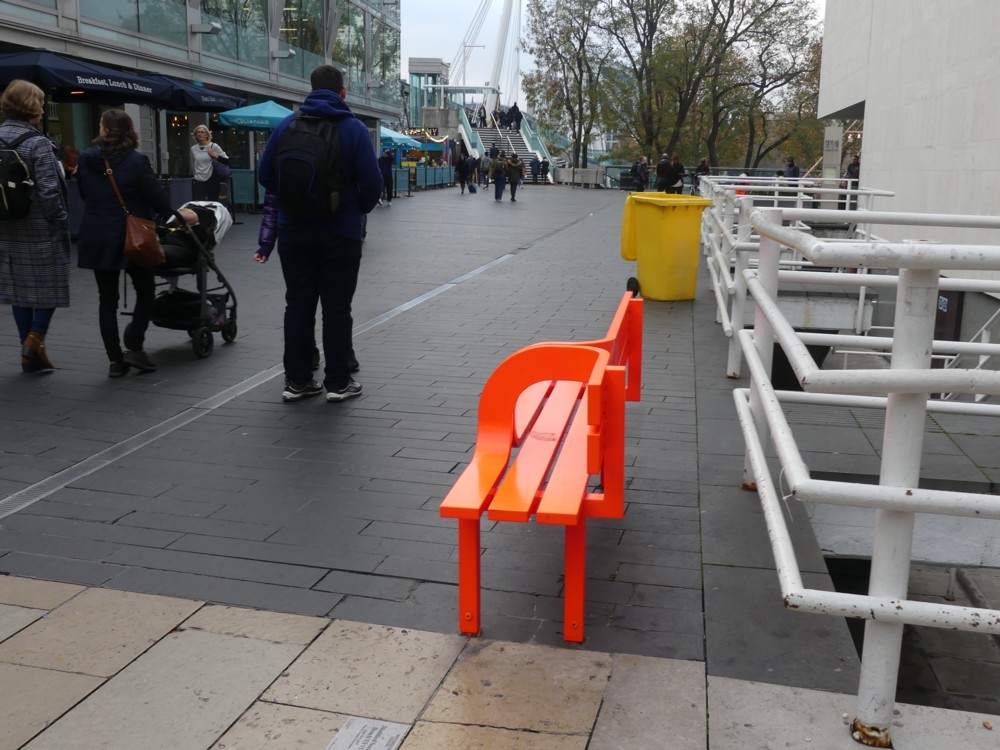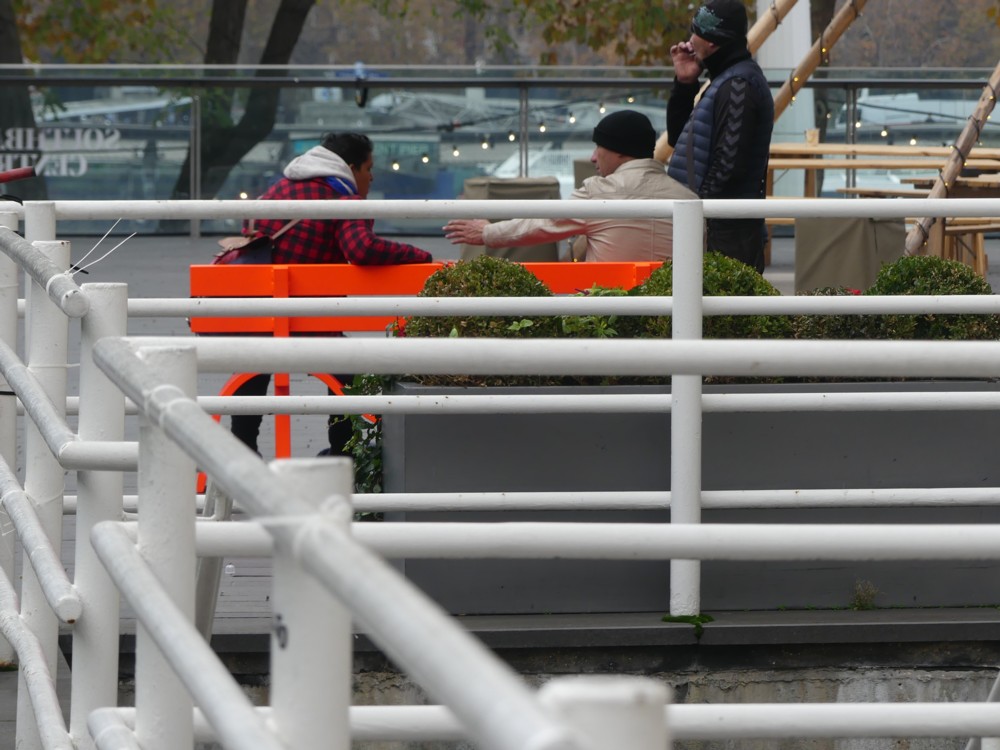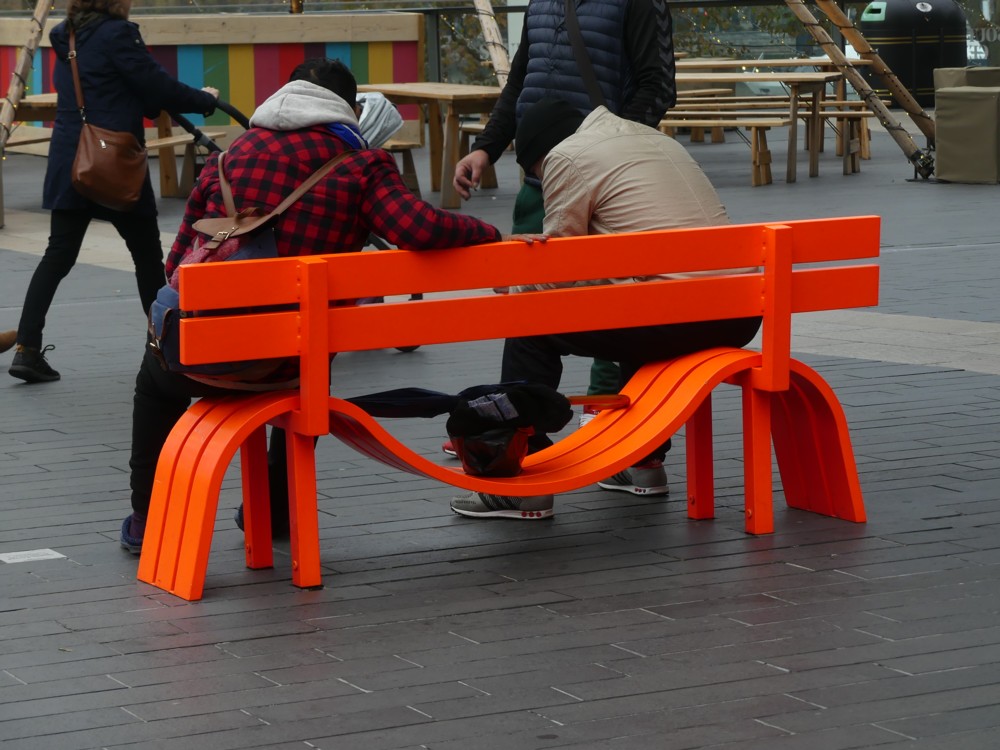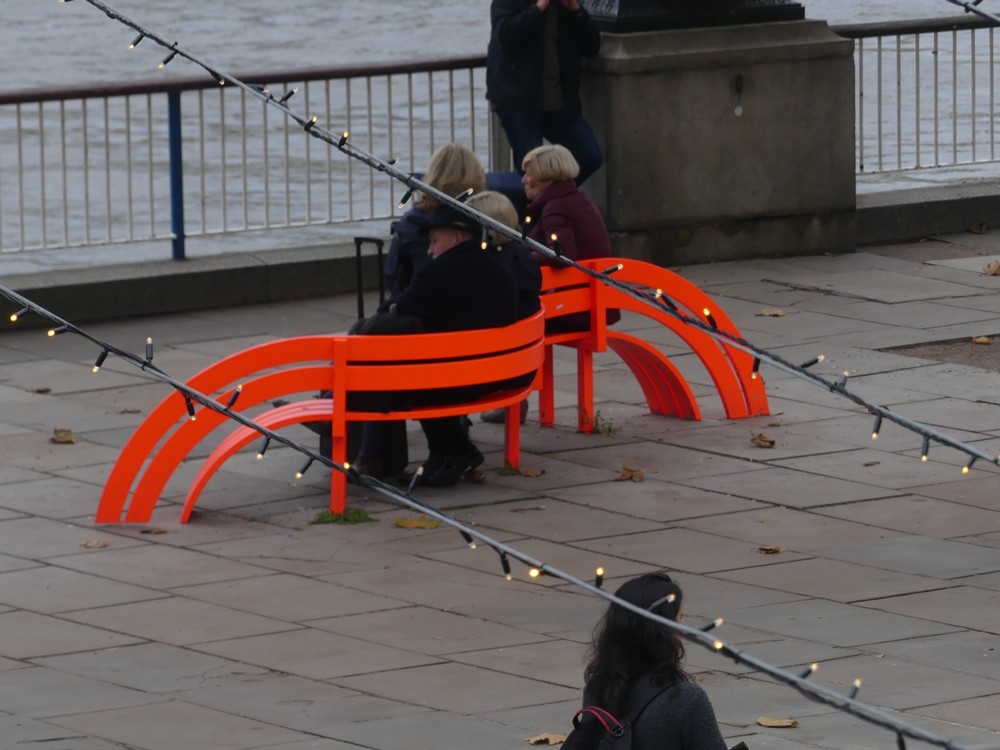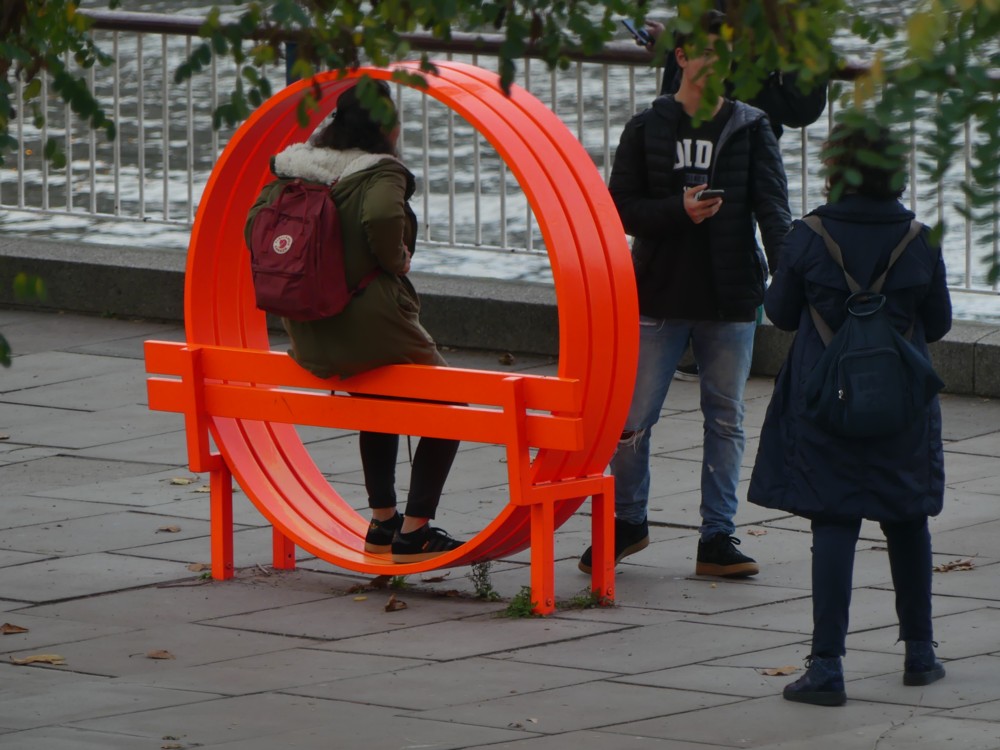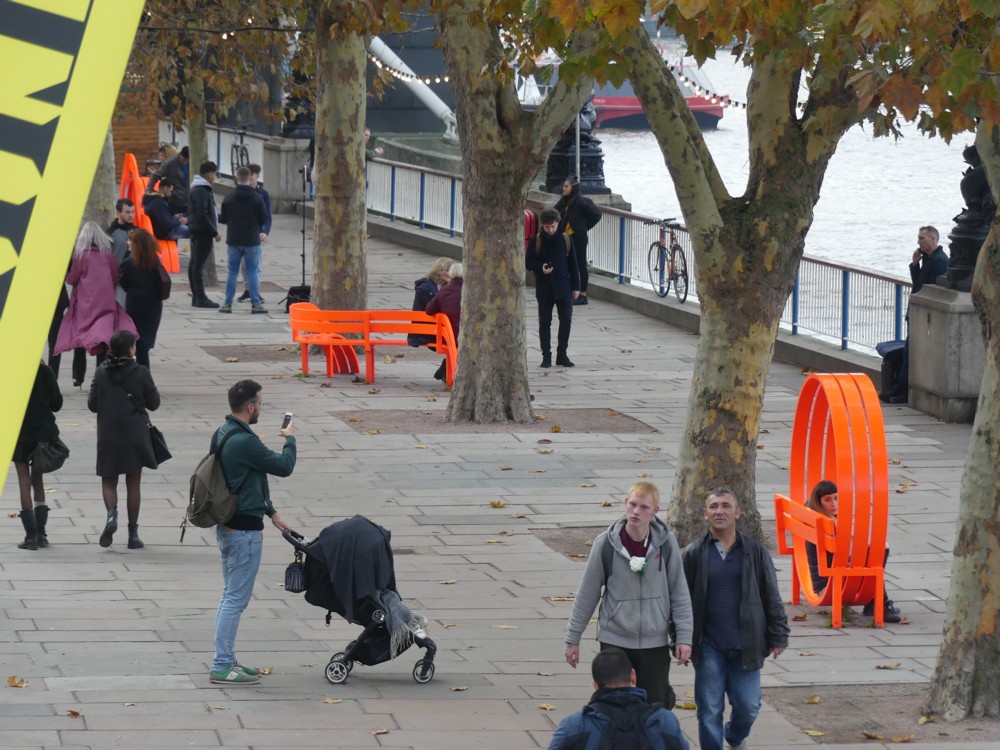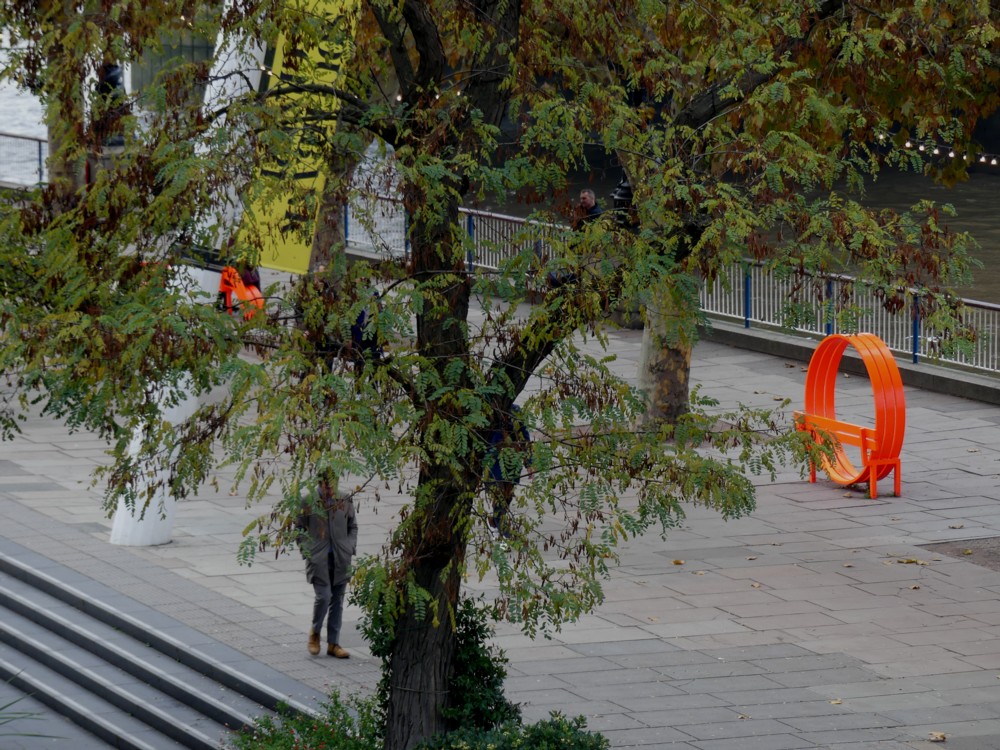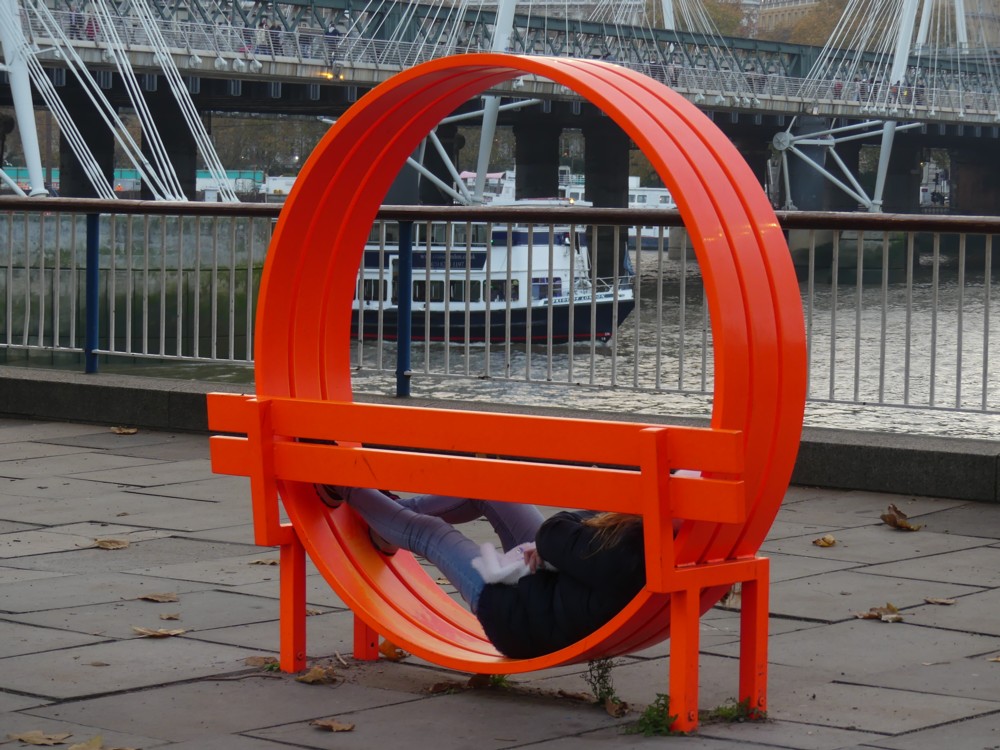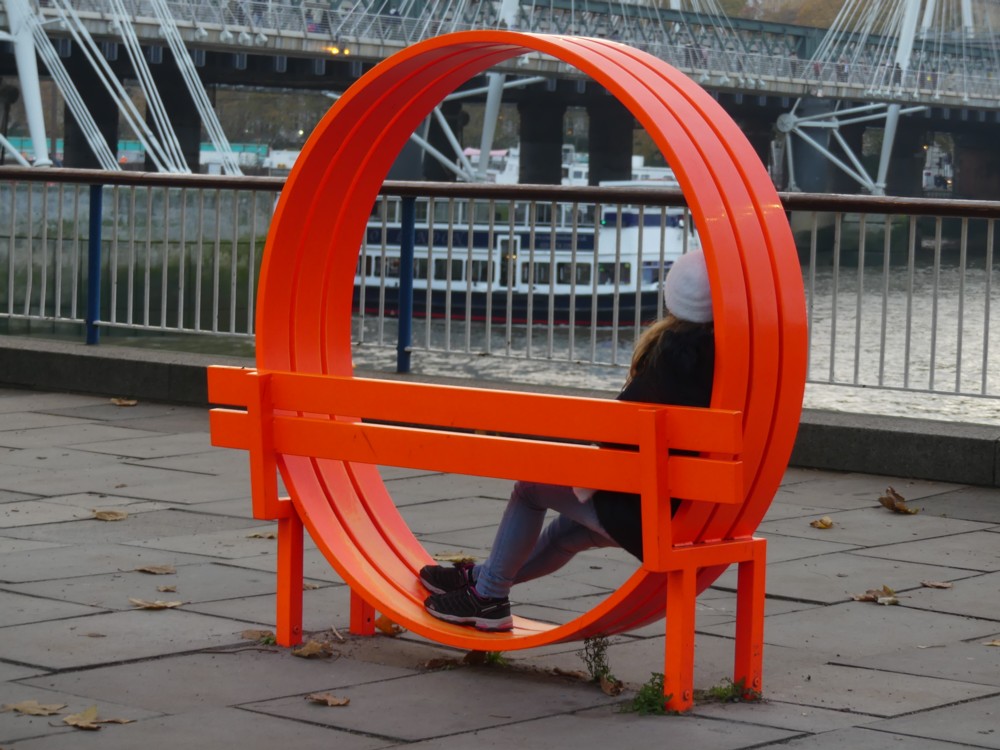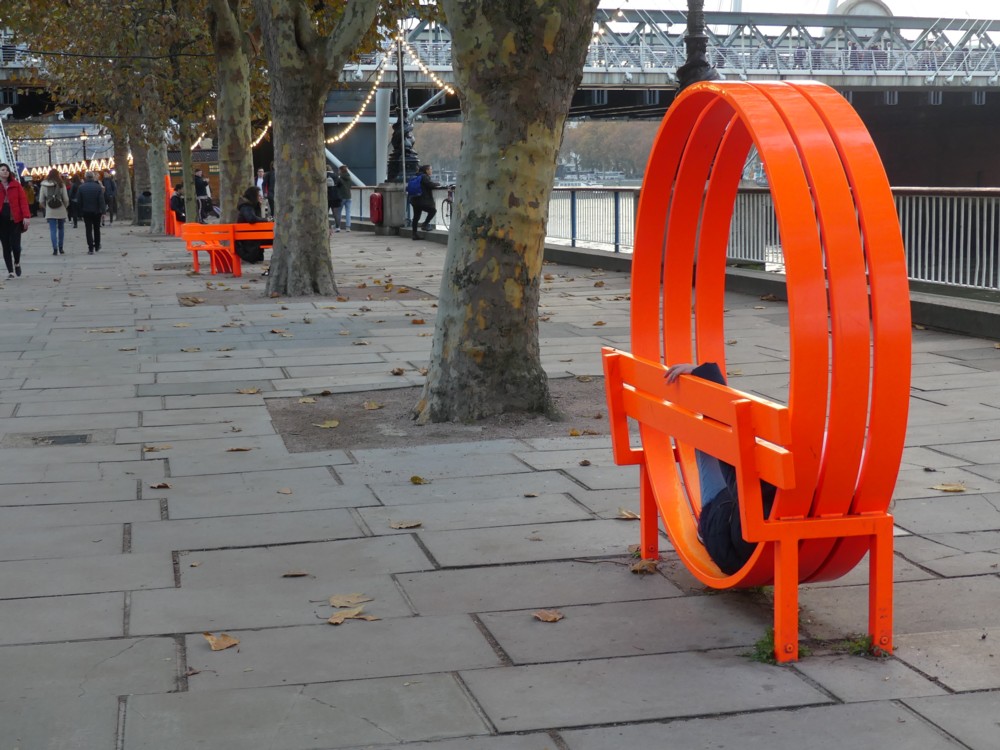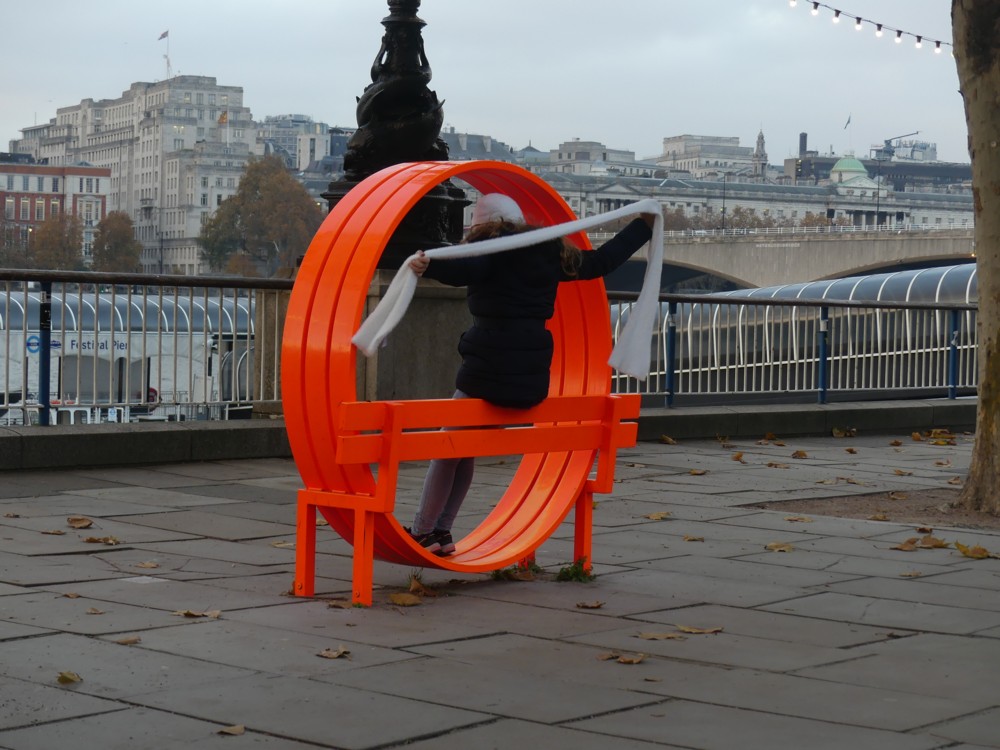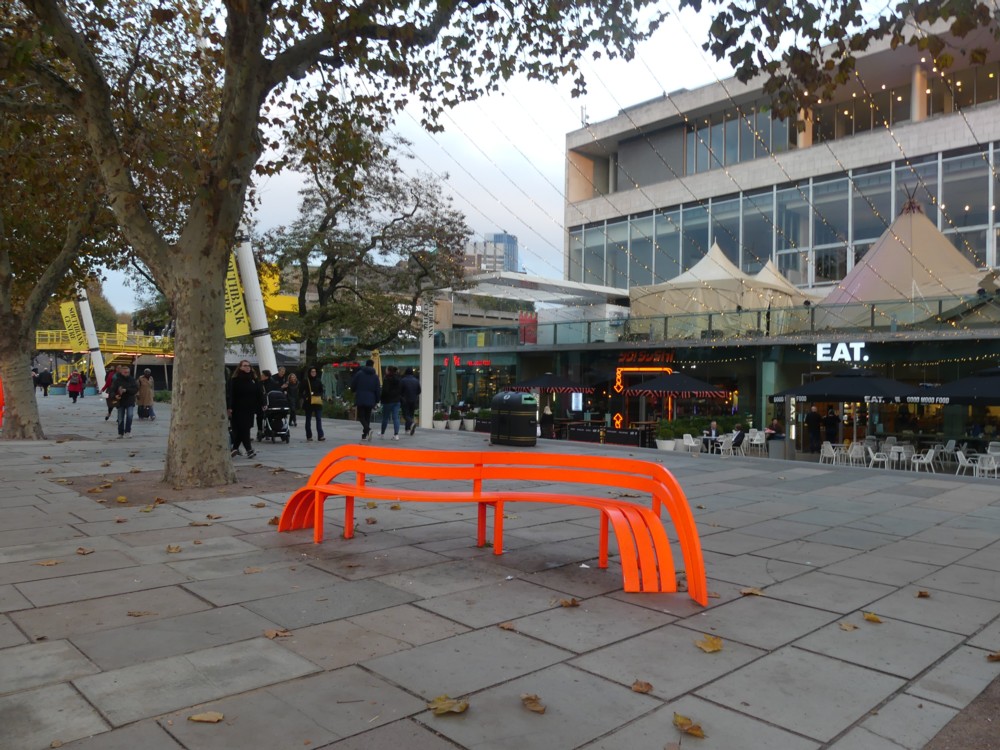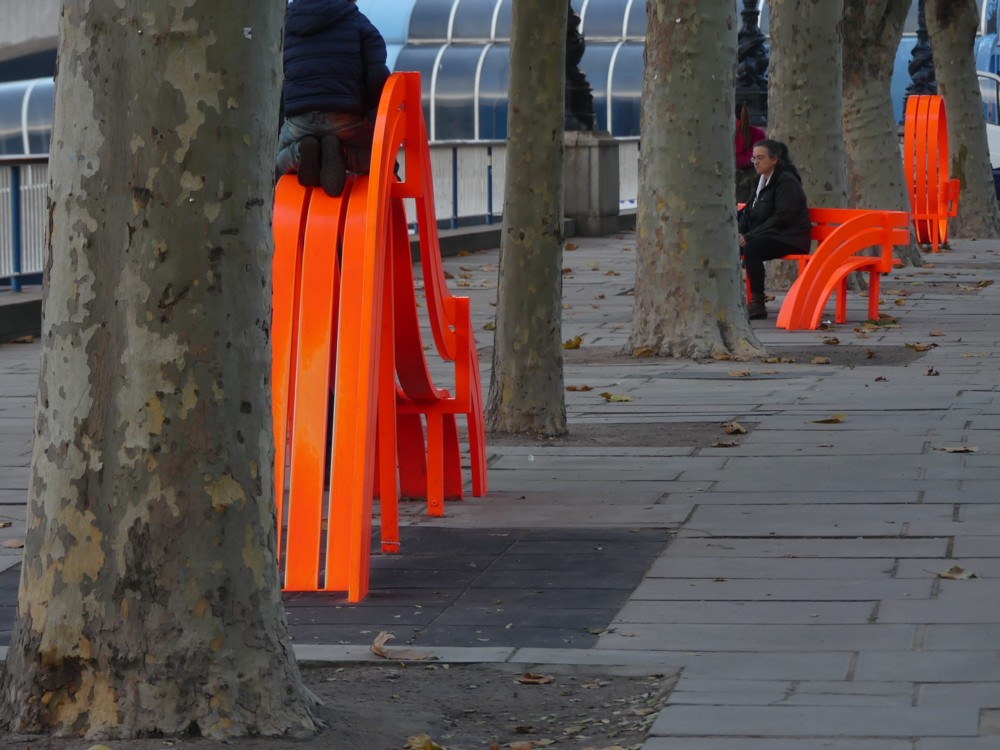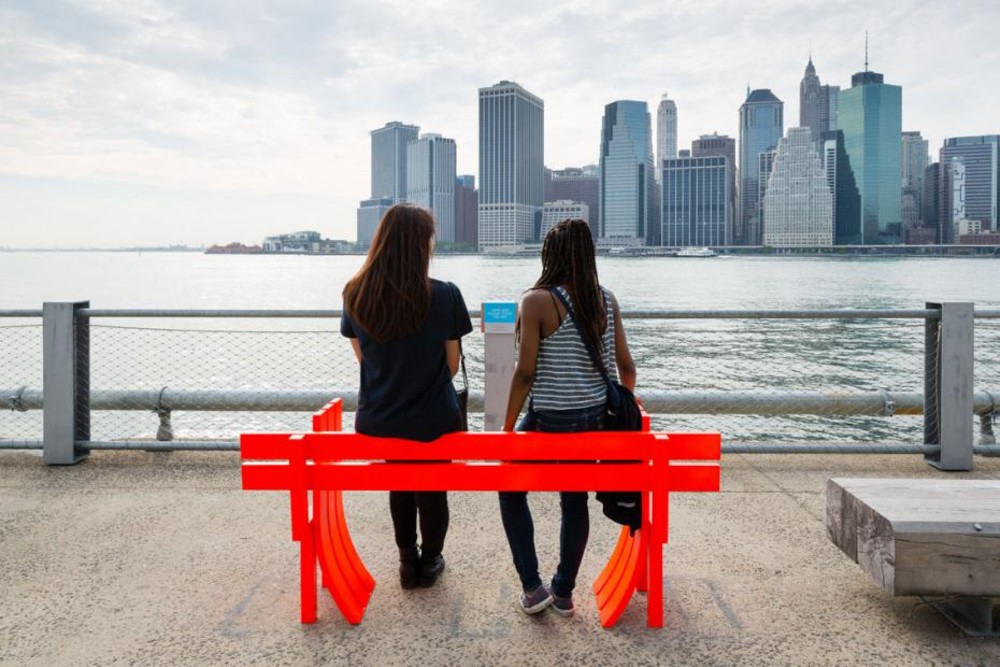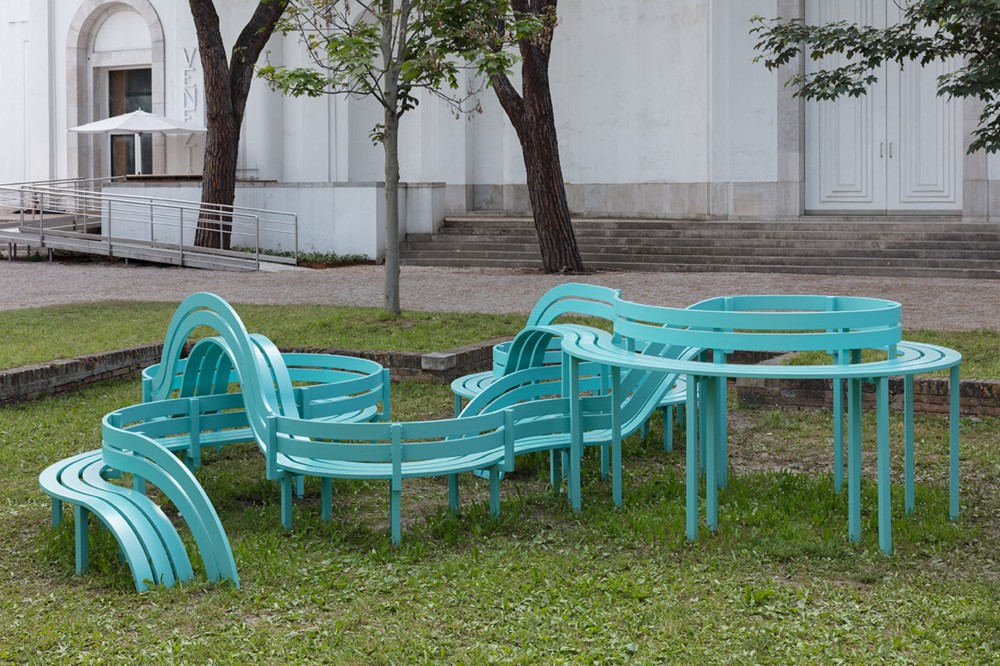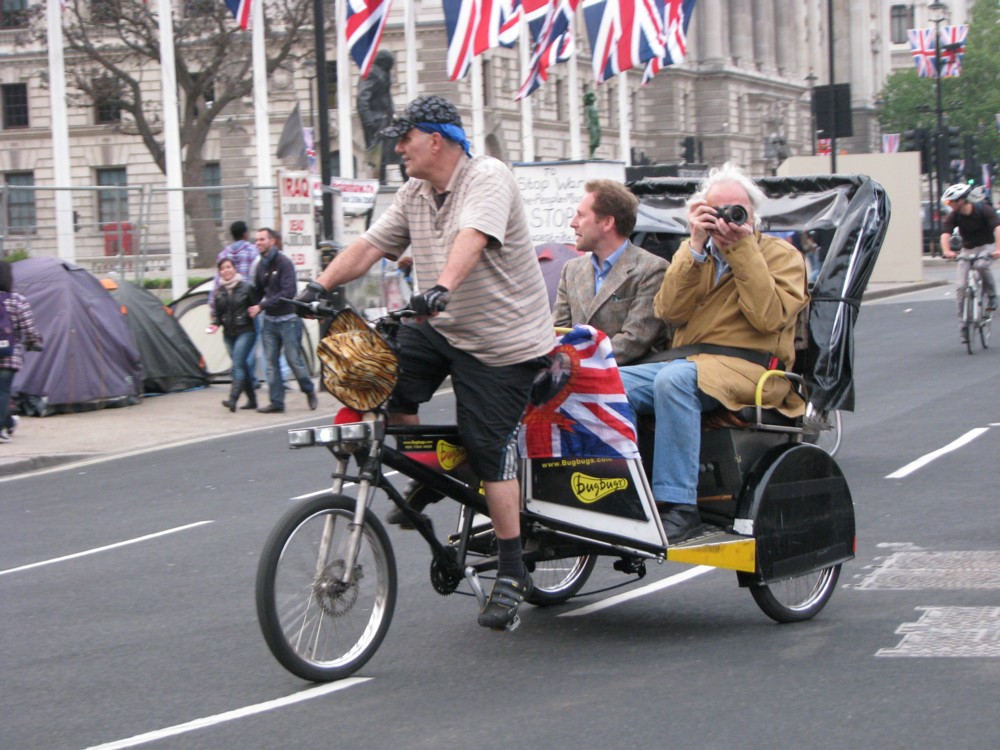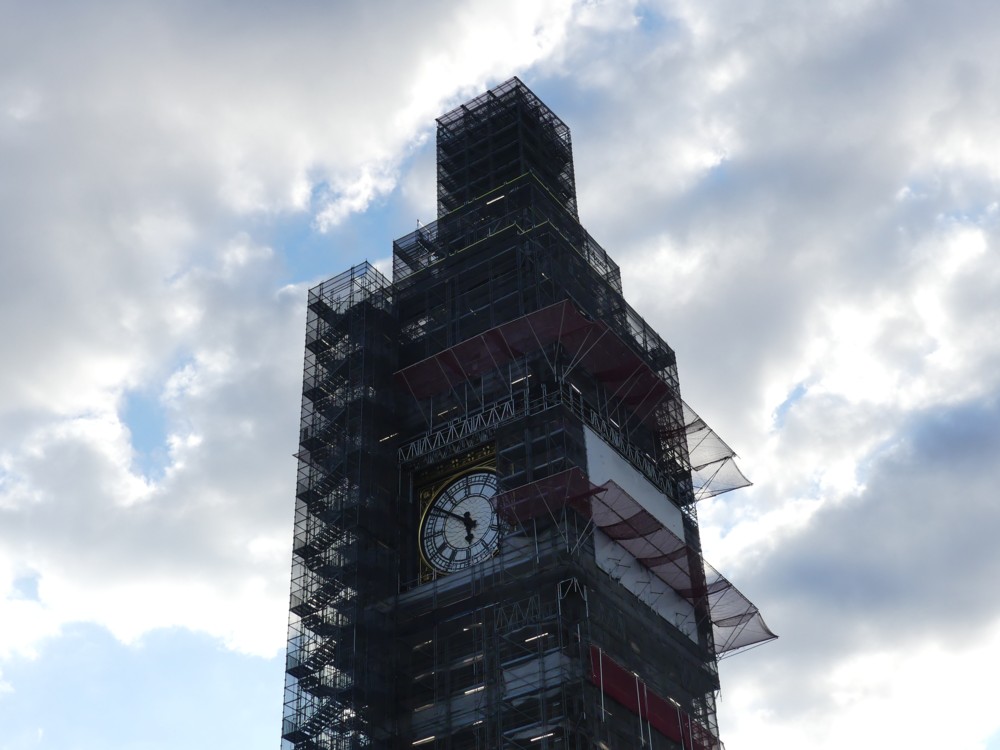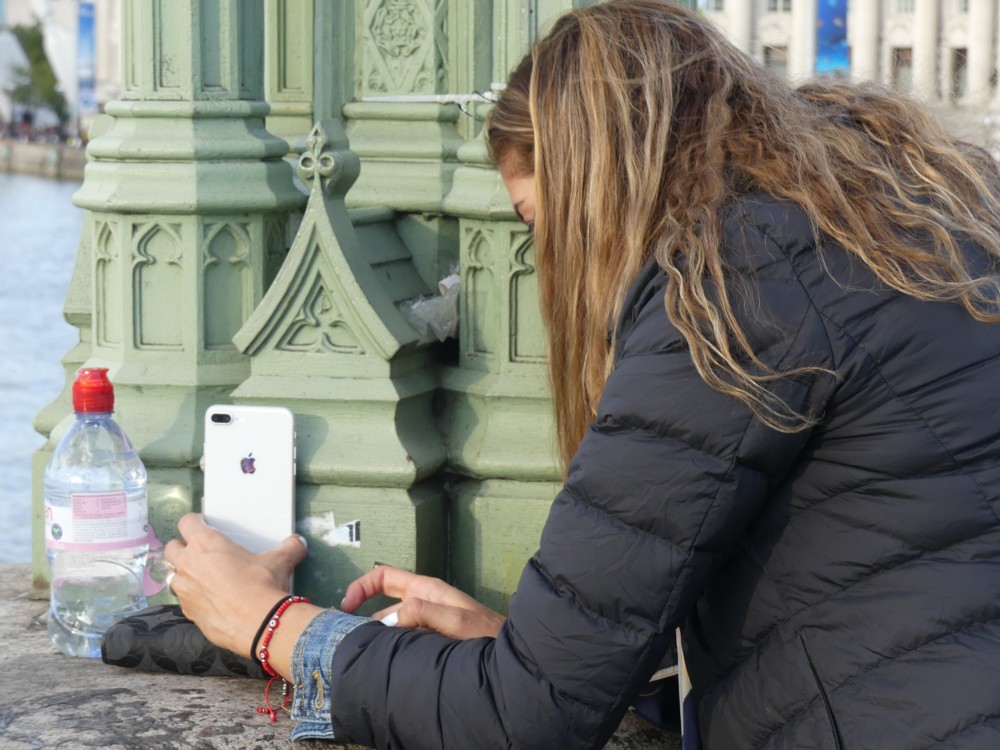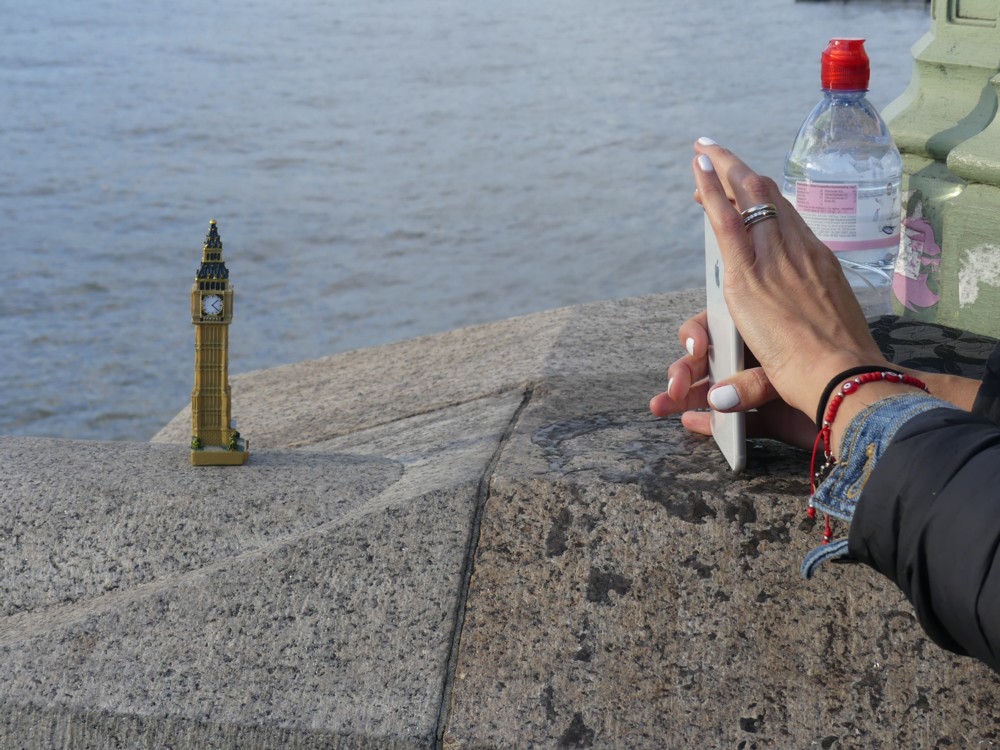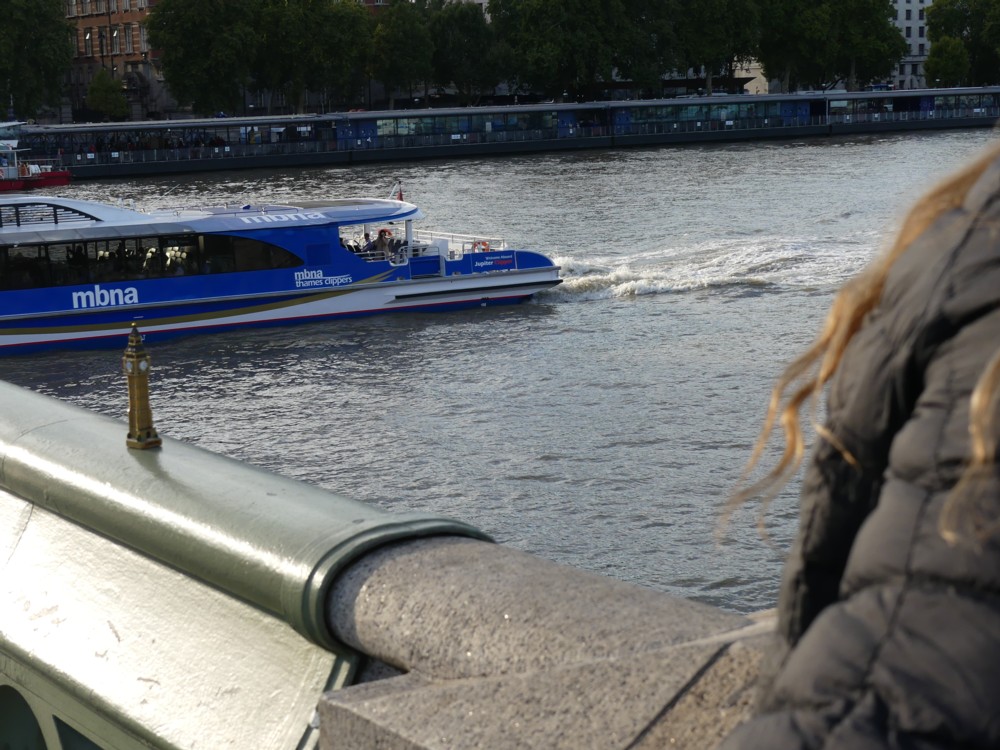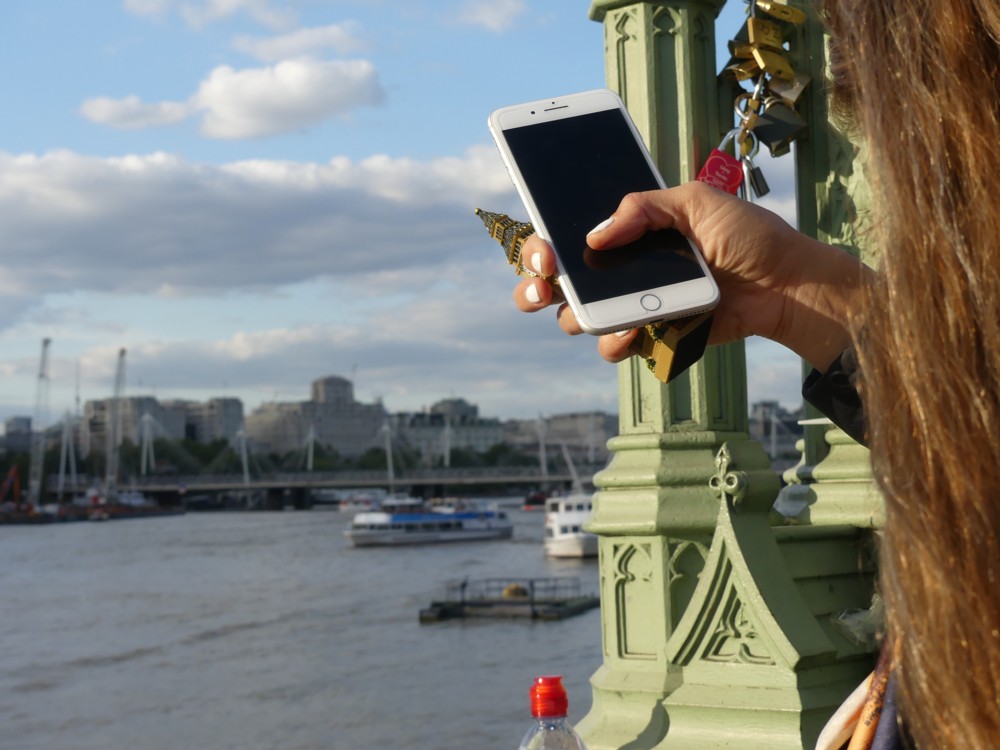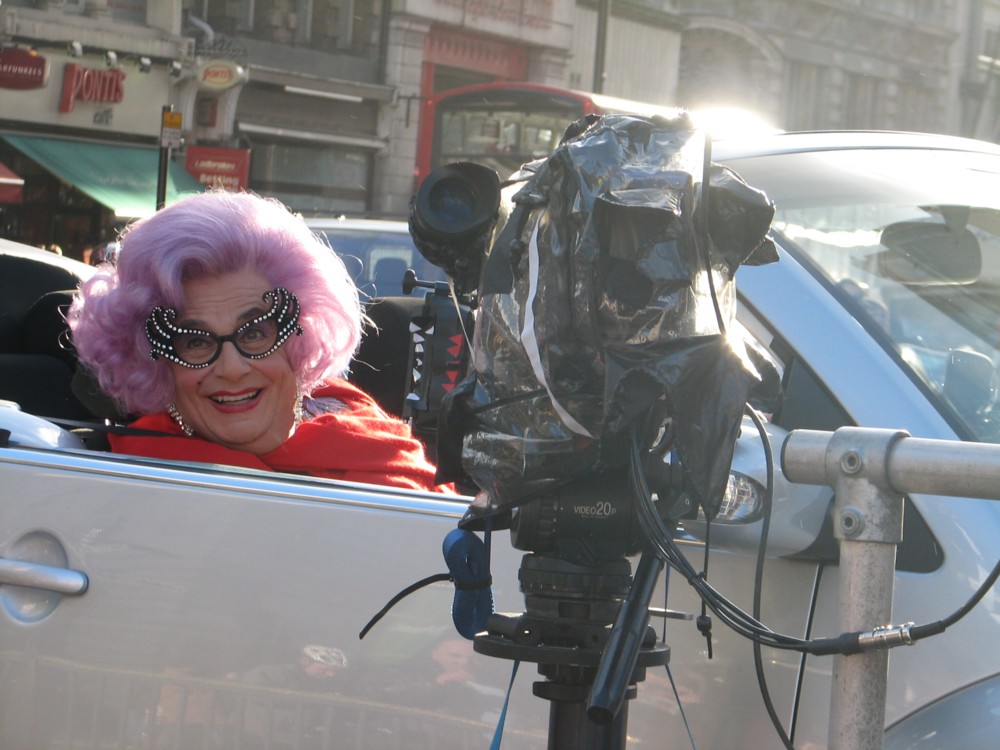There are seven of them, and they are bright red. Here are fourteen photos (two of each) that I photoed in November 2018. The weather was grim, making everything else look decidedly monochrome by comparison:
Which I think worked rather well to show how these bright red objects brighten up a part of London still ruled by orthodox Modernists and their monochromatic prejudice against “imposed ornament”. They prefer imposed boredom. This is called “structural honesty”. And honestly, this can get very boring.
Here are some more photos, photoed on that same November day, of these sculpturised bits of furniture, concentrating more on the Royal Festival Hall context, and making it clear that the point of these things is that they can be sat on. When they can be sat on, that is. The final one above, for instance, is very bum-hostile. Number three is not much better, but as you will see below, a group of people did manage to perch themselves upon it:
These red Things are the work of the Danish sculptor Jeppe Hein, who looks like this.
He calls them Modified Social Benches. The above red London ones were installed in 2016. And he did similar ones for New York, around the same time:
And a more complicated one, not red, in 2019, in Venice:
And various others in various other places.
This guy would appear to be a lot like Antony Gormley in how he operates. Once he has found a formula for a particular family, so to speak, of sculptures, he deploys the formula in various different spots around the world. With Gormley, it was those Gormley Men, lots or just a few of them. With this guy, benches all in the same style with local variations and complications to suit the budget and the location.
Like Gormley, Hein has devised other formulae, which strike me as a lot less appealing than this modified social bench formula.
Also like Gormley, Hein emits the usual dreary ideological orthodoxies of his time concerning such things as climate change, and as soon as he opens his mouth to explain what he reckons he is doing with this or that piece of his work, I switch off. I just like the red benches he did for London, for my reasons rather than for his. If my reasons overlap in any way with his reasons, fine. If not, also fine.
Jeppe Hein has been a very busy man.

